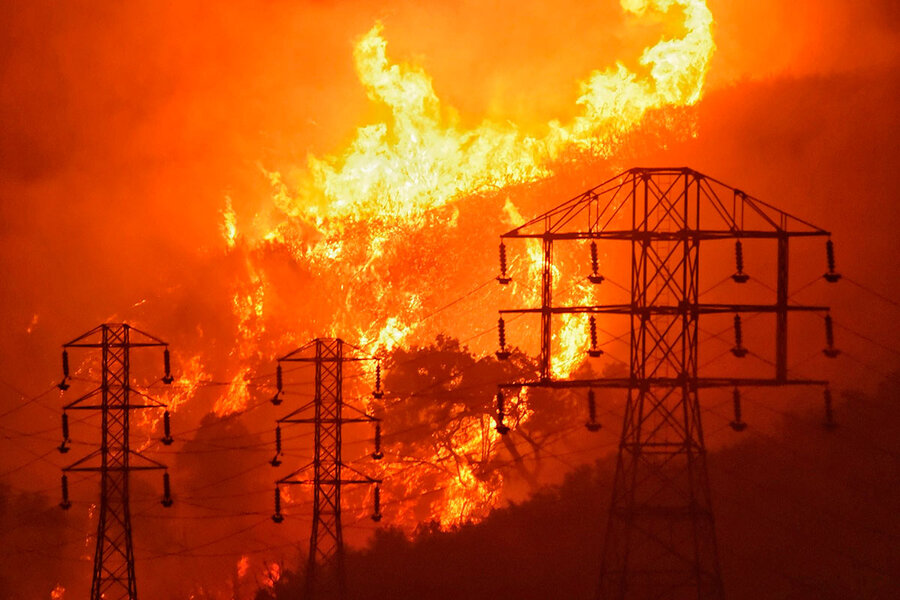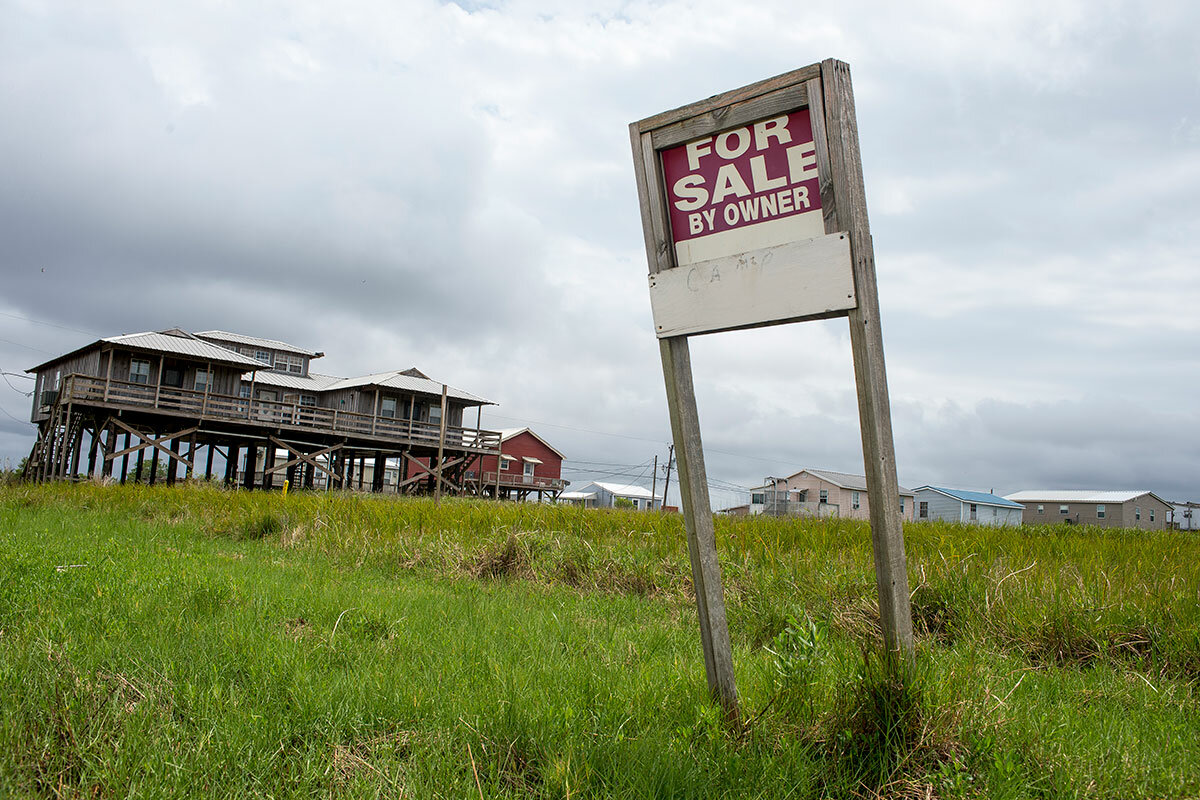Amid fires and hurricanes, price of climate change begins to hit home
Loading...
Climate change is starting to pack an economic punch.
In California this summer, severe wildfires have intensified a political brawl over who should shoulder the liability. Utility companies, which carry most of the risk if their equipment starts a fire, charge that they could go bankrupt if the legislature doesn’t alleviate their legal liability. Insurance companies, which would have to shoulder the risk, argue that climate risk is still manageable.
And as hurricane season begins for the United States, low-lying Miami is beginning to see the value of flood-prone coastal properties grow more slowly than real estate on higher ground.
Why We Wrote This
Climate change,which many skeptics argue is more bark than bite, is starting to demonstrate an impact on economies – and perceptions.
The links between these natural disasters and climate change are complicated and nuanced. Further clouding the discussion, many conservative politicians still argue there’s no such link. On Sunday, before touring northern California’s deadly Carr fire, Interior Secretary Ryan Zinke told a local California TV station that the wildfire “has nothing to do with climate change. This has to do with active forest management.”
Slowly, despite the ongoing political debates over climate change’s causes and effects, the economic impacts are beginning to hit home in certain communities. For example: Flood-prone coastal properties in five Southeastern states have lost $7.4 billion in potential value since 2005 because they appreciated at a slower rate than coastal real estate at higher elevations, according to one study released last month.
So far, the proven economic impacts of climate change are relatively mild. But if natural disasters become increasingly destructive and these economic effects become more severe, the perception of climate risk could change quickly.
“If there’s water in your street, no one really cares if you’re a Republican or a Democrat,” says Matthew Eby, the executive director of First Street Foundation, the New York nonprofit that published the five-state study on coastal real estate. “They just care about how to get a solution. And if that water continues to rise year over year and the frequency [of flooding] is going up, they’re going to care even more.”
The nonprofit has set up a website, FloodIQ, so coastal homeowners can determine their risk of hurricane and tidal flooding.
Subsidized risk
Of course, living on the ocean is such a powerful draw for many homeowners that they might be willing to endure a little flooding and give up some property appreciation. And while rising risks would normally raise insurance rates – as they have for wind-damage insurance – flood insurance is effectively subsidized by the federal government.
The National Flood Insurance Program (NFIP) keeps racking up losses to the tune of some $1.4 billion annually, according to a Congressional Budget Office report last year – and it was already $20.5 billion in the red even after President Trump forgave $16 billion of its debt last fall. Its yearly shortfall largely stems from claims in 284 coastal counties (premiums from inland counties actually produce a small surplus).
“If it was priced fairly, many fewer people ... would be able to afford its coverage,” Donald Hornstein, a law professor at the University of North Carolina at Chapel Hill and disaster insurance expert, writes in an email.
As losses mount, calls for reform of the 50-year-old program have grown louder. But Democratic and Republican congressmen representing coastal districts worry that changes would bankrupt many of their constituents’ skyrocketing premiums. Two weeks ago, Mr. Trump signed an extension of the NFIP through hurricane season and the midterm elections in November – the seventh such extension since long-term authorization expired in 2017.
Shifting responsibilities?
In California, wildfire insurance is also subsidized, but in a different way. Under state law, utilities are liable if their power lines or other equipment causes a fire, even if they are not negligent. Found responsible for 12 fires last fall, Pacific Gas and Electric (PG&E) has seen its stock fall 40 percent and could be on the hook for up to $12 billion. California Gov. Jerry Brown (D) has created a commission to come up with a solution by the end of August, saying bankrupting utilities would only hamper the state’s green-energy initiatives aimed at combating global warming.
Shifting the liability from utilities would expose insurance companies to sharply increased climate risk. They claim that PG&E’s $12-billion liability estimate is overblown, citing a Wall Street analyst’s report suggesting a payout of about half that amount. “If we thought climate change was making the risk uninsurable, we would be saying it,” says Rex Frazier, the president of the Personal Insurance Federation of California. “But we’re not saying that.”
Even if some of the liability did shift to insurance companies, California laws make it difficult and slow for insurers to raise their rates.
With homeowners in flood- and fire-prone areas insulated from the true cost of insurance, it’s not clear that the nation is close to a tipping point where the public would demand more stringent rules for building in such areas, says Michael Wara, director of the Climate and Energy Policy Program at the Woods Institute for the Environment at Stanford University. But “social perception – once that changes, things are going to happen very very fast.”
And the catalyst might not be a natural disaster, but an economic one, such as the bankruptcy of a big utility, a failure to pay federal flood-insurance claims, or the inability of homeowners to get insurance or a mortgage for risky properties.
“Long before the environmental impacts are significant, you're going to see people making dollars and cents decisions,” says Anthony Williams, the special projects director for Bendixen & Amandi International, a Miami research firm that conducts an annual Miami real estate study.








